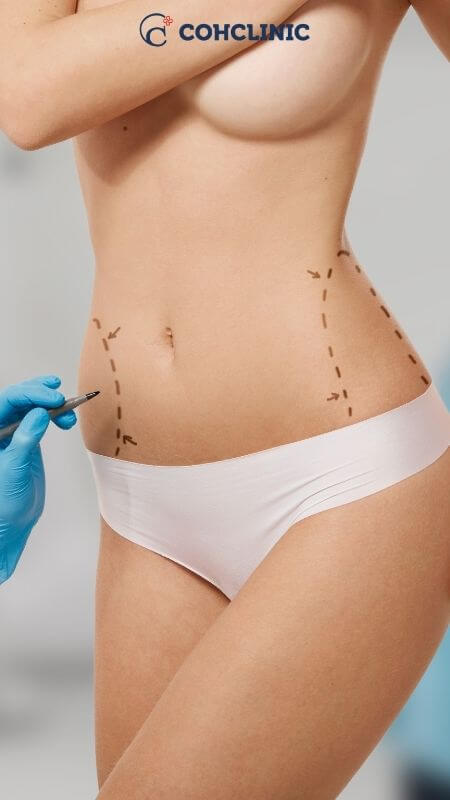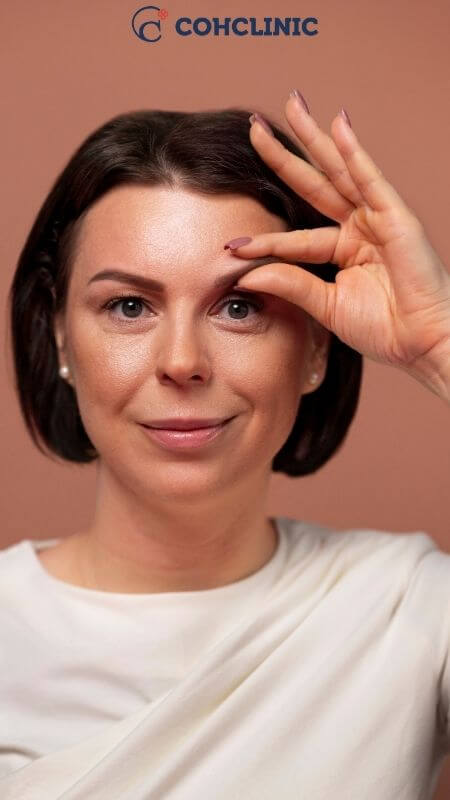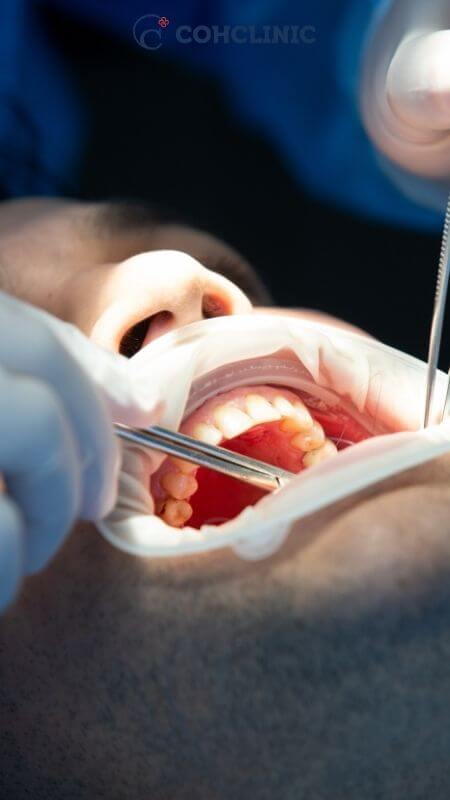A turbinectomy is a common procedure that is frequently done as part of the treatment for sleep apnea and other breathing problems. The treatment itself is straightforward, and recuperation is swift.
To breathe properly, the nose’s intricate anatomy controls and regulates airflow. The turbinates are one of the most crucial parts of the nose. Nasal blockage might develop if they swell excessively. Surgery can be necessary if this blockage persists and becomes a chronic issue.
What is a turbinectomy?
To clear out your blocked nose and lessen snoring, a turbinectomy removes all or parts of the swollen turbinates.
A turbinectomy can treat chronic nasal congestion, a deviated septum, snoring, and certain sleep apnea adverse effects.

The turbinates are reshaped using a separate technique known as turbinoplasty. To move the turbinate, an instrument is inserted into the nose. There may be some tissue removal.
Who needs turbinectomy?
- Chronic Nasal Congestion: Turbinectomy may be recommended for people who have persistent nasal congestion that doesn’t improve with other treatments. This congestion can be caused by conditions like chronic rhinitis, turbinate hypertrophy, or deviated nasal septum.
- Allergic Rhinitis: Individuals with severe allergic rhinitis (hay fever) who do not respond to allergen avoidance measures, medications, or immunotherapy may consider turbinectomy as a potential option to alleviate their symptoms.
- Nasal Obstruction: Turbinectomy may be performed in cases where nasal obstruction is significant and interferes with breathing and quality of life. This can be due to turbinate hypertrophy or other structural issues in the nasal passages.
- Nasal Polyps: In some cases, turbinectomy may be part of a surgical procedure to remove nasal polyps, which are noncancerous growths that can cause nasal congestion and breathing difficulties.
- Sleep Apnea: Turbinectomy may be considered as part of a surgical treatment plan for individuals with obstructive sleep apnea (OSA) if enlarged turbinates are contributing to airway obstruction during sleep.
What are the benefits of a turbinectomy?
- A reduction in sinus headaches
- Improved sleep
- Regaining one’s sense of smell
- Improved airflow
- Fewer common sinus conditions
- Fast recovery
- No externally visible scars
- Often, a decrease in postnasal drip
What are the risks of turbinectomy?
Complications are uncommon and mostly transient. The following are some potential dangers related to the procedure:
- Pain
- Bleeding
- Swelling
- Irritation
- Nasal discharge
- Crusting in the nose
- Dryness in the nose
- Infection
What happens during a turbinectomy?
It normally takes 15 to 30 minutes to do a turbinectomy under general anesthesia. You won’t have any surgical incisions or scars because it is done via your nose.
There are numerous strategies to reduce enlarged turbinates:
- Diathermy involves passing an electric current through a needle that is either inserted within or on top of the tissue around your turbinate. Heat causes tissue to shrink and obliterates tissue cells, which reduces bleeding.
- Trimming is the removal of some of the turbinate. Some bones may need to be removed to cover the exposed region with tissue.
Your surgeon could stuff your nasal cavity. Before you leave the hospital, the packing will be taken off. An operation to repair a deviated septum (Septoplasty) is frequently combined with a turbinectomy.
Depending on the scope of your operation, your hospital stay will last a certain amount of time.
What to expect from turbinectomy
For you to be pain-free and sleeping during your treatment, your surgeon may suggest general or local anesthetic with sedation. A small, high-speed microbrider device is frequently used in conjunction with an endoscope inserted into your nose to remove the extra bone that is obstructing your airway during turbinectomy procedures.
To straighten the bone and cartilage that divide your two nostrils, a septoplasty or turbinectomy may be performed in conjunction with other surgical procedures.
Depending on whether you have other treatments that day, you can often return home a few hours following surgery. You might get swelling, bruising, or both around your eyes or nose, which could be uncomfortable while you heal.
The recovery process might take up to three weeks, but you should be able to go back to work or school after a week. Many patients notice permanent improvements in their ability to breathe and sleep while no longer requiring nasal medications.
Is a turbinectomy painful?
Because a turbinectomy is performed through your nostrils, you will not have any face wounds or black eyes afterward. Your doctor will provide general or local anesthesia, complete the procedure in 15-30 minutes, and then pack your nose with material to prevent bleeding.
Your turbinectomy may be done by diathermy or by trimming, depending on your doctor. The bottom portion of the turbinate is removed during trimming. In the event that your turbinates are significantly enlarged, they could remove some of the turbinate bone and patch up the exposed region with the remaining tissue. By using a needle that is either on the surface of the turbinate’s tissue or inserted inside of it, diathermy entails the passage of an electric current through the needle.
Conclusion
In conclusion, a turbinectomy is a common procedure used to treat conditions such as chronic nasal congestion, deviated septum, snoring, sleep apnea, and nasal polyps. The surgery involves removing or reshaping the swollen turbinates in the nose to improve airflow and alleviate symptoms.
The benefits of a turbinectomy include reduced sinus headaches, improved sleep, improved sense of smell, better airflow, and faster recovery. However, there are potential risks and complications such as pain, bleeding, swelling, irritation, nasal discharge, crusting, dryness, and infection.
During the procedure, general or local anesthesia may be used, and various techniques like diathermy or trimming may be employed to reduce the turbinates. The recovery process usually takes up to three weeks, but most patients experience long-term improvement in breathing and sleep. Overall, a turbinectomy is a straightforward procedure with significant benefits for those experiencing nasal and breathing problems.
To get more information about turbinectomy, contact us at +90 (536) 934 6524.
Frequently Asked Questions
What are the complications after turbinate reduction surgery?
What are the complications after turbinate reduction surgery?
If you've previously undergone turbinate reduction surgery, notify your doctor right away if you have any issues. Fever, bleeding, excruciating pain, and trouble breathing are symptoms to watch out for. Breathing difficulties and general quality of life can both be severely impacted by persistent nasal congestion.
How risky is turbinate reduction surgery?
How risky is turbinate reduction surgery?
Bleeding, numbness in the front teeth, and a diminished or total loss of smell are uncommon consequences. Despite the typically low risk of turbinate surgery, there are some. The biggest risk is too much tissue removal, which prevents the turbinates from warming and humidifying the air you breathe.
Is turbinectomy a major surgery?
Is turbinectomy a major surgery?
To cure sleep apnea and other breathing-related conditions, turbinectomy surgery is a frequently performed procedure. The actual operation is easy, and recuperation happens quickly.
Is turbinectomy safe?
Is turbinectomy safe?
Turbinate reduction is often a safe operation with little risk of morbidity. The majority of people with serious nasal blockage concerns can be helped by an otolaryngologist who is knowledgeable about many turbinate reduction techniques.
Is turbinate surgery worth it?
Is turbinate surgery worth it?
Turbinate surgery is a highly successful procedure when performed by a qualified specialist. After surgery, the majority of patients enjoy rapid alleviation and a marked improvement in quality of life.
Does turbinectomy make your nose smaller?
Does turbinectomy make your nose smaller?
Although turbinate reduction alone does not affect the size or form of the nose, you might want to inquire with your doctor about how your nose will be impacted if you require a septoplasty.
Can turbinectomy cause empty nose syndrome?
Can turbinectomy cause empty nose syndrome?
After partial or total turbinectomy, an uncommon condition called empty nose syndrome (ENS) may appear. Although the nasal airway is objectively large, the primary symptom of ENS is a paradoxical impression of obstruction.
What is the aftercare for turbinectomy?
What is the aftercare for turbinectomy?
Following turbinate surgery, nasal cleaning or irrigation is advised. This needs to begin the day following surgery. In comparison to saline nasal spray, this is a more thorough cleaning of the nose. The procedure will subsequently be repeated two to three times each day until the healing is finished.
What is the recovery time for a turbinectomy?
What is the recovery time for a turbinectomy?
The average person may return to work or school in approximately one week and to their regular schedule in about three weeks. The degree of your surgery and your work also affect this, though. In one to two months, you should feel completely well. After your operation, you might need to see your doctor often for three to four months.
What is the success rate of turbinectomy?
What is the success rate of turbinectomy?
Approximately 82% of turbinate reduction attempts are successful overall. Although the tissue around your turbinates may ultimately regenerate, many people find the outcomes of turbinate reduction to be sufficient.
What are the different types of turbinectomy?
What are the different types of turbinectomy?
Electrocautery, cryotherapy (cryoturbinectomy), laser vaporization, and turbinoplasty are only a few of the many diverse turbinectomy procedures that are employed.
Is turbinectomy covered by insurance?
Is turbinectomy covered by insurance?
To address both aesthetic and functional issues at the same time, some patients have rhinoplasty procedures combined with septoplasty and/or turbinectomy. Insurance will only pay for the septoplasty and/or turbinectomy component of the operation in certain circumstances.







